| Books |  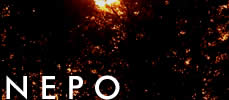  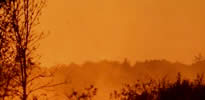 |
|
More Together Than Alone ATRIA, JULY 17, 2018 Order from an online bookseller:
Amazon Every word in this book has been tested in the fire and can be trusted. CITED BY SPIRITUALITY & PRACTICE MAGAZINE AS ONE OF THE BEST SPIRITUAL BOOKS OF 2018
REVIEWS More Together than Alone is a beautifully crafted message from the heart, a powerful cry that we are one, interconnected living community, stretching through time and space. Weaving together stories with profound reflections, this book strikes at the deepest need of our time. It is such a profound book, so many stories across millennia, so much on which to meditate deeply, that a few words of endorsement seem inadequate. Mark Nepo offers a vital message that belongs to all of our human history, but is especially needed at this moment in our shared destiny. What is more needed in our time than a book about the power and promise of community, a book rooted in the simple fact that we are part of one another, whether or not we know it? And who better to issue the call to community than a gifted poet and philosopher who's spent his life helping to "stitch the world together?" Every word in this book has been tested in the fire and can be trusted. So please read this book, breathe in Mark Nepo's teachings, and help stitch the fabric of trust across our tattered world. In our digital age, we can be connected to everybody and everyone, but not truly connected in the ways that matter most. More Together Than Alone is a compelling testament to the power of community to help us lead happier, healthier, and more fulfilling lives. Mark Nepo has given us not only a much-needed message of hope and inspiration, but a practical guide on how to build a better tomorrow, together." In this dazzling series of meditations, Mark Nepo returns us to an enduring truth: We must love one another—or perish. Just as medieval monks kept literacy alive during the dark ages, he shows us how we too must keep alive the literacy of the heart, no matter how deafening the noise of hate. For this essential task, More Together than Alone is required reading. In an age of racial divisions, school shootings, and international conflict, this book's message about the necessity of coming together is timely, and its examples of human compassion and unity often comforting. More Together than Alone is not a business book, but any person, in any business, can heed Mark Nepo's call. What an amazing book this is! Mark is writing at the height of his powers here. I have found myself deeply moved time and again while turning the pages. Mark Nepo has written a guidebook for our complicated, polarized time, with his poet's heart and compassion… The combination of practicality and inspiration leaves readers with hope for our world, and gratitude for this beautiful book. I see Mark Nepo's book on the vital importance of harmonious community, More Together than Alone, as the pinnacle of his publishing life; one can only wonder what more is to come. I've been reading and re-reading More Together Than Alone which is so profoundly relevant in these times. With the wisdom and honesty that lies in each page, it's been a tremendous source of peace and understanding for me as I navigate what is now before us. Mark's prose is so insightful and from the heart. Each story reminds us so much of who we are as human beings and the choice to recognize how we are all one at heart. It gives me hope that we will all pull together in the days ahead with compassion and unity by lifting each other up.
BOOK DESCRIPTION After twelve years of research, New York Times bestselling author Mark Nepo has gathered stories and lessons of community from across cultures and history, with the aim of affirming that, despite the hardships always present, we are more together than alone. With the heart of a poet and the eye of a philosopher, Nepo leads the reader through a spirited mapping of case studies centered on how human beings find each other and work together. The result is a profile of social experiments that inquire into the dynamics of relationship and community that arise out of how we're inspired and forced to care for each other. While some moments of community were long-standing and multi-generational, others may have lasted a week or an hour. The focus of this book is to uncover the pathways that bring us together. Of the book, Nepo says, "Why tend to all this? Because somewhere another child is being born who will ask us things we don't yet know, and we must have some sense of how to account for our time on Earth. Ours is a complicated era and so we need every resource and example of heart and resilience we can find. It is both comforting and challenging to realize that no one person can wrestle from the Earth the song of how we can survive together and no one voice can sing that chorus. The stories of community in this book help us accept and inhabit the spiritual fact that we need each other more than ever." More Together Than Alone also offers an online community guide that includes: guidelines for gathering in small groups, a page on Facebook where you can share and pass on your own stories of community, questions to live with, a suggested reading and film list, and the endnotes that support the research that went into creating the book.
EXCERPTS LIFE AROUND THE FIRE
WE CARRY A LIVING WISDOM
THE TWO TRIBES
MORE TOGETHER THAN ALONE ONLINE COMMUNITY GUIDE
A CONVERSATION WITH MARK NEPO ABOUT HIS NEW BOOK, What are you trying to explore with this book? In the Hindu Upanishads, there's a passage that speaks to how those who become wise lose their names in the Great Oneness, the way rivers lose their names when they flow into the sea. In this transformation from the solitary to the communal, there's a mysterious physics that each generation has to relearn regarding what is possible when we can work together. Time and again, we're asked to discover, through love and suffering, that we are at heart the same. How do we come to this knowledge in our lives, in our families, and in our communities? What brings us together and what throws us apart? How do we inhabit what we have in common as well as what makes us unique in ways that deepen our daily practice of service and compassion? To explore these questions, I have gathered stories and lessons from across cultures and history, which reveal moments of community and the qualities of being and relationship that bring people together. My aim is to affirm that, despite the hardships always present, we are more together than alone. How is this book different from your other books? The aim of this book is to lift up the thread throughout history that shows our lineage of working well together, living well together, and helping each other through difficult times. In my other books, I use my life as a common example of passages we all go through. But since this book focuses on the dynamics of community, I draw on historical and contemporary examples of passages we all face in relationship. When we can care deeply and give freely, there is a natural evolution from the exploration of an inner self to the practice of self and other in the world. In this regard, the work of community applies Spirit in the world. How does this book address the divisions we face today? We live in a time, globally, when people have stopped listening to each other, when fear keeps escalating into violence. It's easy to perpetuate this fear and violence and isolation, and to believe that life is disjointed and that people are cold and barbaric. But I remain convinced that there is a living lineage of human kindness and cooperation, which needs to remembered and uplifted. Each story models courage and care. Each story holds lessons for us to use today. We need to learn from this lineage because somewhere another child is being born who will ask us things we don't yet know, and we must have some sense of how to account for our time on Earth. Ours is a complicated era and so we need every resource and example of heart and resilience we can find. It is both comforting and challenging to realize that no one person can wrestle from the Earth the song of how we can survive together and no one voice can sing that chorus. The stories of community in this book help us accept and inhabit the spiritual fact that we need each other more than ever. Can you describe one understanding you've gained from your research and writing of this book? This book took twelve years to research and write and two more years to edit and revise. And I'd have to say that one thing that keeps surfacing through all the stories cross-culturally throughout history is that when broken by tragedy, we're very close to being ethical and loving. Yet when overrun by fear, we often think self-interest will protect us from the hardships of life, when all it does is consume us until we add to the hardships wearing on others, unwilling to own the harm we inflict. Time and time again, we can see that the moral conscience of a society is measured by how well it threads its justice with its compassion. There's a chapter in the book entitled "We Are They." What are you saying here? I was born in Brooklyn, New York, six years after World War II, after the defeat of Hitler and fascism, six years after the Holocaust, in which some of my family perished. As a child, I was frightened by images of the atomic bomb's obliteration of Hiroshima. In grade school, we practiced hiding under our desks, as if that would keep us from being incinerated. I came of age in the sixties, part of a hopeful generation who questioned the war in Vietnam. I later saw the Berlin wall come down, and, in time, witnessed the first African-American president sworn in on the steps of a White House built by slaves. During my lifetime, there has been a slow, steady awakening of community that has upheld America as the land of the free. Through all this, I have grown to understand that, different as we are in what we believe, there is no they. We are they. And so, I try to stay true to what I know while listening to the opposite views of others. Listening this way, I've come to see that the underpinnings of our current divisions as a nation fall below politics, below Democrat or Republican. More and more citizens are losing themselves in a world built on fear and hate, where tolerance for difference is tissue paper thin, and their understanding of security is based on striking out against others. As I witness the racism, sexism, xenophobia, and unprocessed anger that is being unleashed, I fear that our isolation and self-interest, as a government and a people, have poked and stirred the darker angels of our nature. Now, we are forced to take our turn in facing the ever-present challenge: to give in to fear or to empower each other to be brave enough to love, brave enough to discover and accept that we are each other. It seems the need to reanimate a true sense of community is more important than ever. Under all our differences, our capacity to behold, hold, and repair what we have in common is part of a kinship that goes back to prehistoric clans that survived the elements by caring for each other. We need to recover and extend that kinship of care. I hope this book is a contribution to the reawakening of our common humanity and our common capacity. Can you share a story or two from the book? Yes, here are two. In the first, Elie Wiesel recalls the Holocaust death march he and thousands were forced to make in the ice and snow of the eastern European night; forced to run barefoot for hours toward Buchenwald. In anticipation of the Allied forces, the SS butted and pistol-whipped the emaciated prisoners on and on. Anyone who slowed or stopped was trampled. Those who fell were shot. In the midst of this hell, a poor soul near Wiesel stumbled to the hard ground. Others nearby fell on top of him. But why? Because they knew he would be killed? Because without thinking they hoped that the SS wouldn't know which of them to shoot? Because some in their exhaustion were ready to surrender their broken lives to keep the bullet from ending his life? There was too much chaos in the air. The guards just beat them all till they got to their feet. Of all the harrowing, awful, and poignant events Wiesel witnessed as a fifteen-year-old, this small anonymous moment of community is what has stayed with me. I imagine it at the oddest times, while driving home in the rain, while walking our dog in the light snow. It won't let go of me. I think it is a painful koan that holds the essence of community. As kind and brave as it is brutal, this moment is a testament to the lengths we'll go to care for each other, if led or pushed to our true nature. In such pain, in such desperate circumstances, in a frame of mind beaten and starved into numbness, what made these men throw their lives into a pile of compassion? This is real knowledge we need to understand. For doesn't the strength of true community wait in the space between us and the fallen? The second story of unexpected community is more recent. It took place just off the old town square in Santa Fe, New Mexico. One of the oldest bookstores in the city, Collected Works, was moving about three blocks from San Francisco Street to Galisteo. On the day of the move, over a hundred volunteers showed up and formed a line from the old storefront to the new. And one by one, they passed book by book, all day long, until the move was complete. This is a metaphor for how people show up, across time, to help move the stories of the tribe from one living home to another, a book at a time, a person at a time, just off the public square, story by story, hand by hand. At our best, we are stewards of knowledge that everyone needs but which no one owns, passing what matters from seeker to seeker, from generation to generation. In the back of the book, there's a link to an online community guide. Can you tell us why you created this and what it includes? I firmly believe in the need to personalize what we understand, and to apply what we learn to our life in the world. Creating this online community guide is a way to personalize a reader's own experience of community, whether that be in their family, their circle of friends, their neighborhood, their workplace, or in their town or city. The guide includes: suggestions for gathering in small groups, a page on Facebook where you can share and pass on your own stories of community, the "Questions to Live With" that appear in the book, a suggested reading and film list, and the endnotes that support the research that went into creating this book. I encourage readers to enter these conversations, activities, and resources with a friend or loved one, and in time, with someone they don't yet know. For community builds when a kindness is given and a voice is heard, and when something is built together that can't be built alone. What is your hope for anyone engaging with this book? It is my hope that, by understanding authentic moments of community, we can affirm that community is real and possible—beyond any illusion or deception. For no one can hide the truth of our failings or dismantle our better selves. The lessons gathered here are meant to be neither cynical nor idealistic, but resilient and useful. It is my hope and belief that by rediscovering how to work together, with respect and love, we can build a better world. |
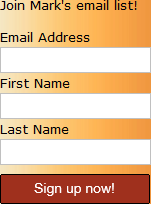


|
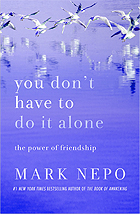
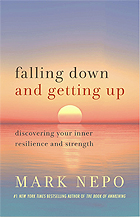
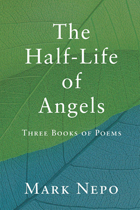
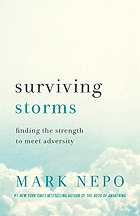
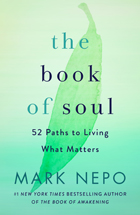


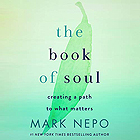
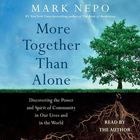
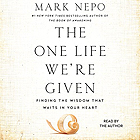

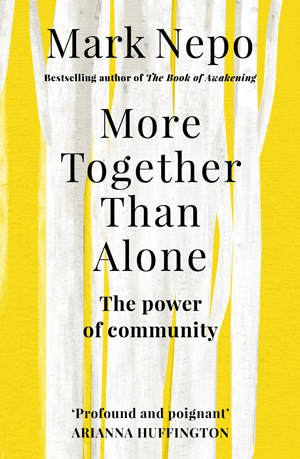
 My neighbor and I wave to each other through the trees, though we don't even know each other's name. After a snowstorm, we worm our way out. I admit it's comforting to see another in the open, leaning on his shovel, his breath clouding as he looks again to the sky. There's something primal in knowing that we each have a fire we huddle around. I love clearing the path to our door and leaving the light on.
My neighbor and I wave to each other through the trees, though we don't even know each other's name. After a snowstorm, we worm our way out. I admit it's comforting to see another in the open, leaning on his shovel, his breath clouding as he looks again to the sky. There's something primal in knowing that we each have a fire we huddle around. I love clearing the path to our door and leaving the light on.

